Images taken with the 24 in telescope
Click on an image to see full-size version
Misc. Objects
-
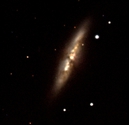
M82 galaxy taken by AST208 class in Spring 2006.
-
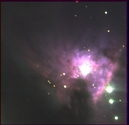
Orion Nebula taken by Aaron LaCluyze and AST312 Spring 2003 class. April 11, 2003.
-
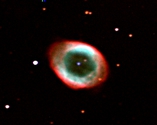
M57 - The Ring Nebula
-
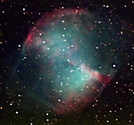
M27 - A planetary nebula.
-
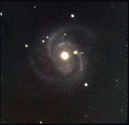
Supernova in M100. Feb 2006.
-
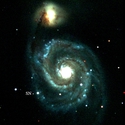
Supernova 2001DH in M51. June 30, 2011.
-
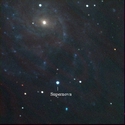
Type-Ia supernova 2011FE in galaxy M101. Aug 30, 2011.
-
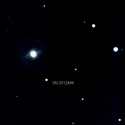
Type-II supernova 2012AW in M95. May 9, 2012.
-
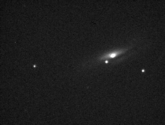
Supernova in NGC 3190, April 10, 2002.
-
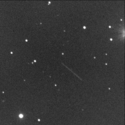
Streak from Apollo asteroid 2011MD 150,000 km from Earth on June 27, 2011. (Closest approach was 12,000 km.)
-
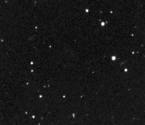
Animation of a 1-km asteroid 2012LZ1, some 5.5 million km from Earth on June 15, 2012.
-
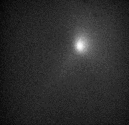
Comet Hyakutake on April 1996 (Credit Chris Wilkinson).
Comet Schwassmann-Wachmann 3 (73P) Passing in the Spring of 2006
-

Changes in the coma of Fragment B showing breakup and outburst.
-
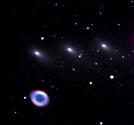
May 8, 2006 - Timelapse of a close approach of Fragment C to the Ring Nebula.
-
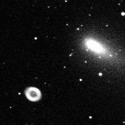
Animation showing passage of Fragment C by the Ring Nebula.
Comet 17P/Holmes Outburst of 2007
-
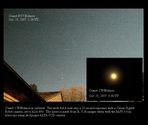
Oct 25, 2007 - Comet Holmes near magnitude 2.5.
-
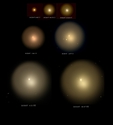
Oct 31, 2007 - Note expansion of the coma since Oct 25.
-
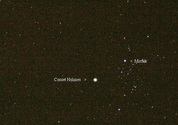
Nov 5, 2007 - Comet now easily seen as a fuzzy ball with the naked eye. (Canon Digital Rebel camera)
Images and Animations of Jupiter
-
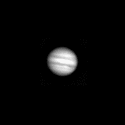
May 6, 2002
-
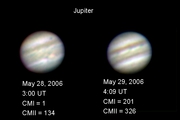
May 28–29, 2006
-

An impact spot seen in this I-band image from 2009.
-
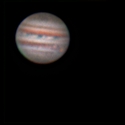
Nov 19, 2012
-
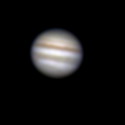
Video clip of Jupiter rotation. July 2, 2008.
-
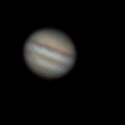
Animation of Jupiter rotation, Aug 7, 2009.
-
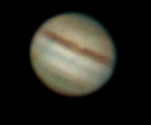
Animation of rotation on Aug 28, 2010. Notice the weakening of south equatorial belt since 2009.
-
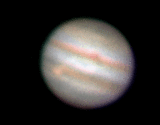
Animation of rotation on Oct 21, 2011. The equatorial belt is restored since 2010.
-
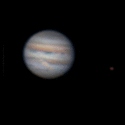
Animation of rotation on Oct 25, 2012. Moon Io is visible.
Image of Mars From 2003. Filters are mostly Cousins I-band or BVI composites.
In these images, Mars's South Pole is at the top.
-
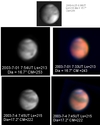
Bright area on upper right corner of Mars is a regional dust storm.
-
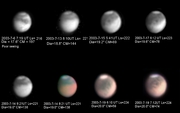
Rima Australis (a break in the south polar cap) can be seen here as the cap recedes.
-
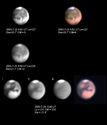
Note the shrinking of the South Polar Cap. Sinus Meridiani and Sinus Sabaeus can be seen here.
-
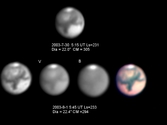
Syrtis Major, one of the darkest features on Mars has been observed since the 17th centrury.
-

Bright area Nix Olympica, around Olympus Mons, may just be visible at the bottom.
-
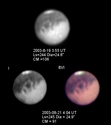
Solis Lacus, the eye of Mars"
-
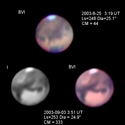
South cap still shrinking as disk reaches largest apparent size.
-
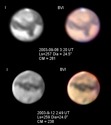
Note the whitish north polar hood cloud at the bottom.
-

Mars retreats from Earth and becomes gibbous in the process.


